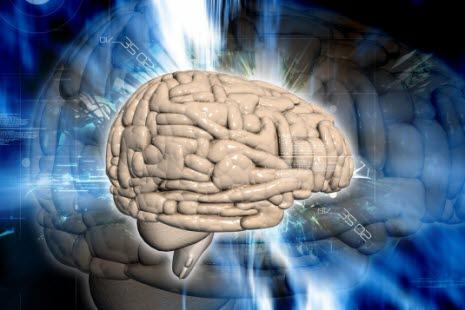Leverencefalopati
Ved alvorlig leversykdom hoper det seg opp med avfallsstoffer i sirkulasjonen. Slike stoffer kan påvirke og sløve hjernen og ende opp i en livstruende tilstand.

Sist oppdatert:
10. mars 2020
Hva er leverencefalopati?
Leverencefalopati oppstår ved alvorlig leversykdom (levercirrhose) og ved akutte leverskader. Encefalopati betyr hjernelidelse. Tilstanden er karakterisert ved personlighetsforandringer, intellektuelle forstyrrelser, nevromuskulære forstyrrelser, nedsatt bevissthetsnivå og koma. Det er en livstruende tilstand.
Leverencefalopati inndeles i ulike grader:
- Grad 0
- Normal mental tilstand
- Mindre endringer i hukommelse, konsentrasjon, intellektuelle funksjoner og koordinasjon
- Grad I
- Personlighetsforandringer med mental reduksjon
- Mild forvirring, oppstemthet eller depresjon; nedsatt oppmerksomhet; redusert evne til å utføre mentale oppgaver; irritabilitet; forstyrret søvnmønster
- Grad II
- Kraftige skjelvinger, agitasjon, tretthet
- Trøtthet, slapphet, store mangler i evnen til å utføre mentale oppgaver, åpenbare personlighetsforandringer, unormal atferd, forbigående desorientering - vanligvis om tiden
- Grad III
- Dypere søvnighet (vekkbar, aggressiv)
- Ute av stand til å utføre mentale oppgaver, desorientert om tid og sted, markert forvirring, husker ingenting
- Grad IV
- Koma med eller uten respons på smertestimuli
Leverencefalopati er en sjelden tilstand, men den er ikke uvanlig ved levercirrhose.
Dette dokumentet er basert på det profesjonelle dokumentet Leverencefalopati . Referanselisten for dette dokumentet vises nedenfor
- Ferenci P. Hepatic encephalopathy in adults: Clinical manifestations and diagnosis. UpToDate, last updated Feb 19, 2019. UpToDate
- Poordad FF. Review article: the burden of hepatic encephalopathy. Aliment Pharmacol Ther. 2007 Feb. 25 Suppl 1:3-9.
- Wolf DC. Hepatic encephalopathy. Medscape, last updated Apr 04, 2019. emedicine.medscape.com
- Brusilow SW, Koehler RC, Traystman RJ, and Cooper AJ. Astrocyte glutamine synthetase: importance in hyperammonemic syndromes and potential target for therapy. Neurotherapeutics, 2010; 7:452–470.
- Olde Damink S, Deutz N, Dejong C, Soeters P, Jalan R. Interorgan ammonia metabolism in liver failure. Neurochem Int 2002; 41: 177-88. PubMed
- Olde Damink S, Deutz N, Redhead D, Hayes P, Soeters P, Jalan R. Interorgan ammonia and amino acid metabolism in metabolically stable patients with cirrhosis and a TIPSS. Hepatology 2002; 36: 1163-71. PubMed
- Shawcross D, Jalan R. Dispelling myths in the treatment of hepatic encephalopathy. Lancet 2005; 365: 431-3. PubMed
- Cordoba J, Alonso J, Rovira A, et al. The development of low-grade cerebral oedema in cirrhosis is supported by the evolution of 1H-magnetic resonance abnormalities after liver transplantation. J Hepatol 2001; 35: 598-604. PubMed
- Balata S, Olde Damink S, Ferguson K, et al. Changes in neuropsychology, magnetic resonance spectroscopy and magnetization transfer following induced hyperammonemia. Hepatology 2003; 37: 931-39. PubMed
- Ferenci P. Hepatic encephalopathy in adults: Treatment. UpToDate, last updated Oct 21, 2019. UpToDate
- Cordoba J, Alonso J, Rovira A, et al. The development of low-grade cerebral oedema in cirrhosis is supported by the evolution of 1H-magnetic resonance abnormalities after liver transplantation. J Hepatol 2001; 35: 598-604. PubMed
- Als-Nielsen B, Gluud L, Gluud C. Non-absorbable disaccharides for hepatic encephalopathy: systematic review of randomised trials. BMJ 2004; 328: 1046-50. British Medical Journal
- Liu Q, Duan ZP, Ha dK, Bengmark S, Kurtovic J, Riordan SM. Synbiotic modulation of gut flora: effect on minimal hepatic encephalopathy in patients with cirrhosis. Hepatology 2004; 39: 1441-49. PubMed
- Cordoba J, Lopez-Hellin J, Planas M, et al. Normal protein diet for episodic hepatic encephalopathy. J Hepatol 2004; 41: 38-43. PubMed
- Gluud LL, Vilstrup H, Morgan MY. Non-absorbable disaccharides versus placebo/no intervention and lactulose versus lactitol for the prevention and treatment of hepatic encephalopathy in people with cirrhosis. Cochrane Database of Systematic Reviews 2016, Issue 5. Art. No.: CD003044. DOI: 10.1002/14651858.CD003044.pub4. DOI
- Sharma BC, Singh J, Srivastava S et al. A Randomized Controlled Trial Comparing Lactulose Plus Albumin versus Lactulose alone for Treatment of Hepatic Encephalopathy. J Gastroenterol Hepatol 2016. Epub ahead of print. pmid: 27885712 PubMed
- Rahimi RS, Singal AG, Cuthbert JA, et al. Lactulose vs Polyethylene Glycol 3350-Electrolyte Solution for Treatment of Overt Hepatic Encephalopathy: The HELP Randomized Clinical Trial. JAMA Intern Med. 2014 Sep 22
- Bass NM, Mullen KD, Sanyal A, et al. Rifaximin treatment in hepatic encephalopathy. N Engl J Med 2010 Mar 25;362(12):1071-81 PubMed
- Sanyal A, Younossi ZM, Bass NM, et al. Randomised clinical trial: rifaximin improves health-related quality of life in cirrhotic patients with hepatic encephalopathy - a double-blind placebo-controlled study, Aliment Pharmacol Ther 2011 Oct;34(8):853-61.
- Sharma BC, Sharma P, Lunia MK, et al. A randomized, double-blind, controlled trial comparing rifaximin plus lactulose with lactulose alone in treatment of overt hepatic encephalopathy. Am J Gastroenterol 2013 Jul 23. doi: 10.1038/ajg.2013.219. DOI